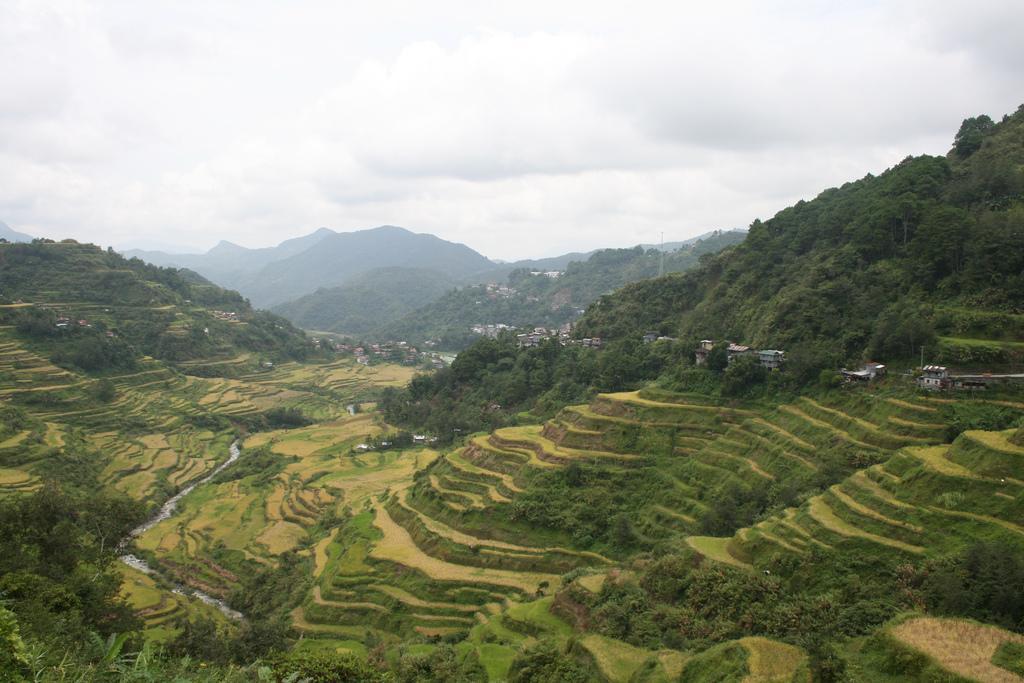
The rice terraces were made by the Ifugaos approximately 2,000 years ago, even earlier than the Colosseum of Rome and Hadrian’s Wall in the United Kingdom. This amazing work can be found at the Cordillera Mountain Range, located north of the Philippines. Long generations of Ifugaos hand-carved the mountains with the use of mere primitive tools and sheer human power. They traced the contours of the land and made the terraces look like large steps heavenward. Because of this, the Banaue Rice Terraces is also called “Stairways to the Sky,” a very fitting title for this work of wonder.
The Ifugao Rice Terraces is an epitome of harmony between humankind and nature. This shows that the environment is willing to be shaped and used as long as the people are taking good care of it. Even the mountains provide a fertile venue for farming and irrigation, thus allowing the villagers to stay in their sanctuary and make their livelihood there. Indeed, this ethnic group had been peacefully living in the Cordillera Mountains long before Ferdinand Magellan “discovered” the Philippines. Even during the colonization period, the Ifugaos successfully resisted influences from other countries.
The rice terraces are a spectacular testimony of nature’s sustainability and a community’s outstanding system of rice production and water irrigation – harvesting water from the mountaintops and harnessing them in carved terraces and ponds – a system which has survived for over two millennia. This intricate structure is a striking example of how an ancient civilization adapted to the hardships posed by their natural environment.
The Ifugaos are the best illustration of the persistence, continuity, and endurance of cultural traditions. They passed on their knowledge, culture, and arts from generation to generation up to the present time. They surpassed various challenges and steered clear of the changes offered by modernization. Many of us can learn valuable lessons from this tribe: not relying too much on modern technology, working together as a community, appreciating our heritage, and taking great measures to protect the environment.
 In 1995, the UNESCO declared the Banaue Rice Terraces as a World Heritage Site. It is being given utmost protection because it might be on the verge of destruction now that a lot of environmental issues are arising. Intermittent earthquakes and more frequent typhoons – a daunting result of climate change – are causing erosion in some parts of the rice terraces. The Philippine government is currently investing in projects to help conserve the site.
In 1995, the UNESCO declared the Banaue Rice Terraces as a World Heritage Site. It is being given utmost protection because it might be on the verge of destruction now that a lot of environmental issues are arising. Intermittent earthquakes and more frequent typhoons – a daunting result of climate change – are causing erosion in some parts of the rice terraces. The Philippine government is currently investing in projects to help conserve the site.
The Banaue Rice Terraces is the best contribution of our Philippine ancestors to humanity.Most of our forefathers’ direct descendants are still living in the Cordillera Region and serving as the guardians of this truly fascinating heritage.
How to Get There
From Manila, there is a direct route going to Banaue, Ifugao, operated by Ohayami Trans. Travel time is 8-9 hours and the fare costs 450-500 pesos per person. You can also ride on Ohoyami Trans Bus going to Kiangan, passing through Lagawe. Ask the driver to drop you off at Lagawe, Ifugao. From there, you can ride a jeep going to Banaue.









